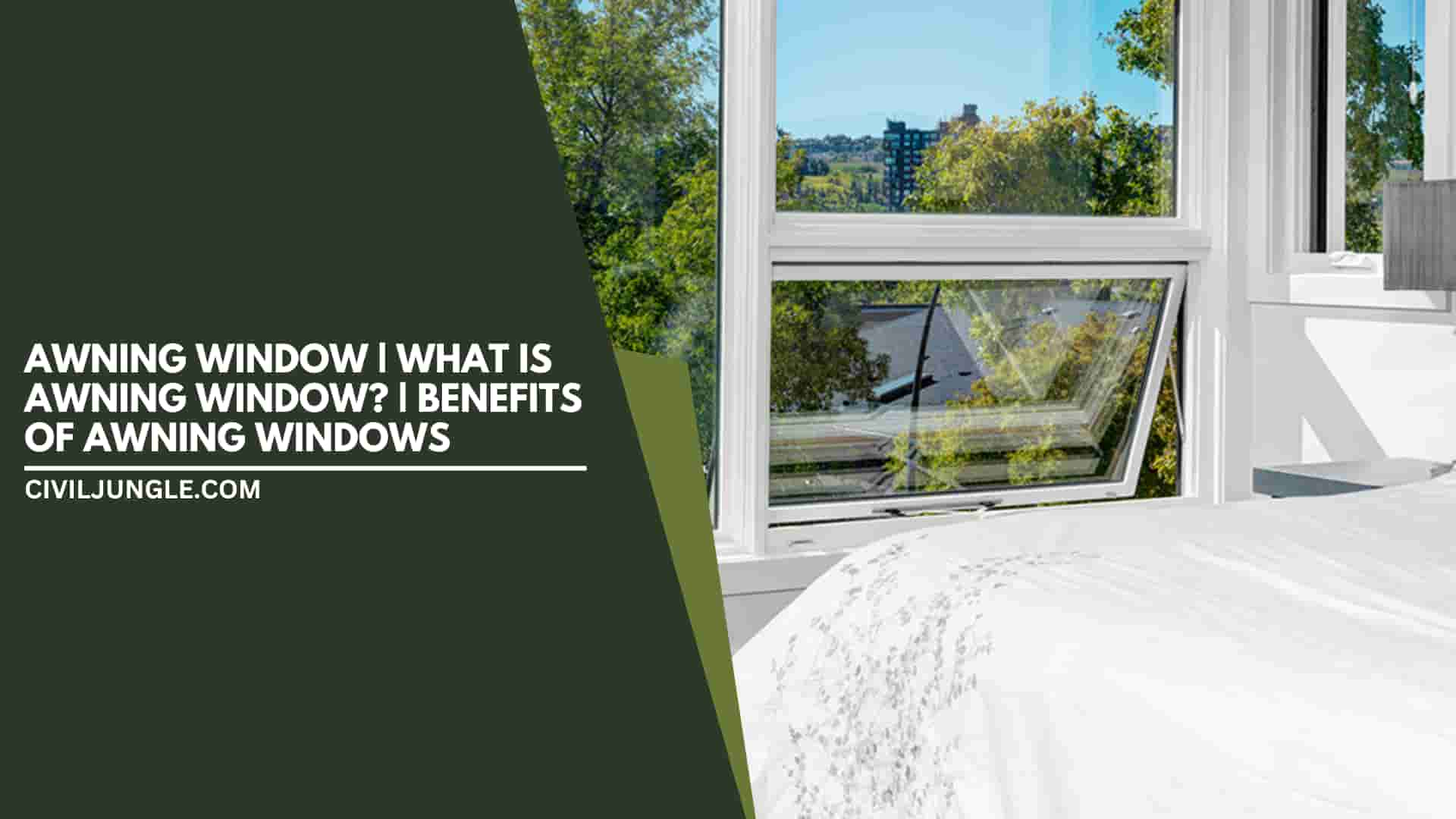
Introduction of Awning Window
The windows at the top of the awning windows are attached to the frame by a hinge and the bottom opens outwards so that ventilation is available and also protects from rain.
Large static windows are often placed high on the walls for privacy as well as for better viewing.
Some awning windows are opened manually with a handle, while some are operated with a hand crank.
What Is an Awning Window?
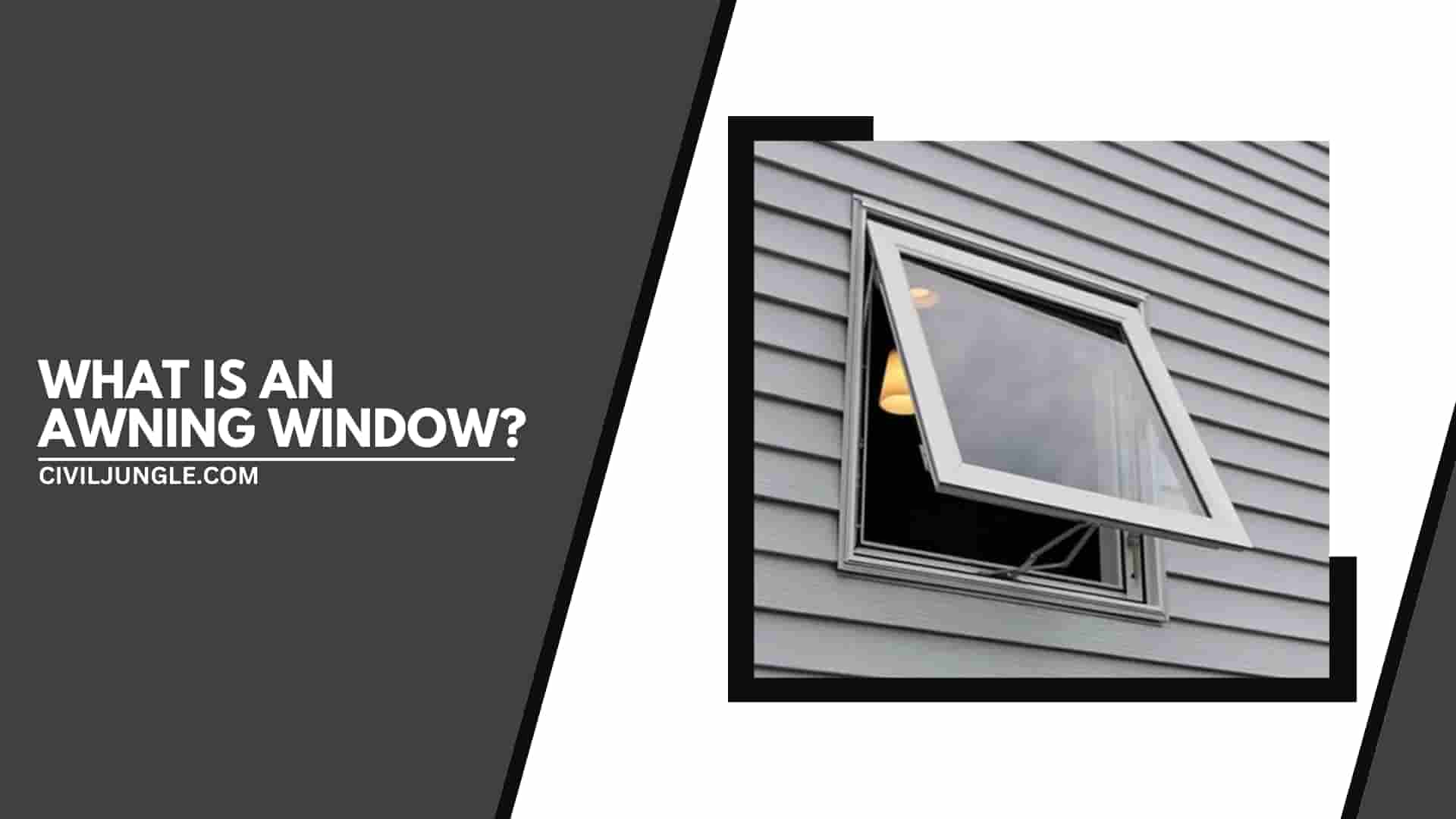
The awning is wider than the height of the window.
These windows are often fixed over doors or large windows for more natural light and to maximize the view.
Awning windows are best for bringing in a cool breeze and expelling the warm air out of the room because they open at the bottom.
If awning windows are kept at a 45 ° angle then water flows so it can be kept open in wet weather.
Awning windows are energy efficient because the wind blowing on them actually creates a tight seal.
Also, read: What Are Walls | Classified of Walls | Load-Bearing Vs Partition Walls
Why Is This Window Called an Awning Window?
Think about whether the name of this window would have been an awning window.
The logic behind this is that when we open the window, the rectangular glass rises and forms a canopy-like shelter.
Thus the name of this window is the awning window based on the connection of such function of the window.
The Awning window is Ideal for different types of places in the house and various design features make this window a versatile choice.
How to Operate Awning Windows
To open a window, open the locks on either side of the window and rotate it with the crank handle until the window opens at the desired angle. Some awning windows open up to 90 degrees.
To close the window, turn the crank handle in the opposite direction until the window closes. Then lock from both sides.
Standard Size of Awning Window
It should be noted that these windows are usually small in size but not smaller than certain sizes.
| Width | Height |
|
2 Inches to 3 Feet 10 1/8 Inches
|
1 Foot 8 Inches to 7 Feet 8 7/8 Inches
|
Also, read: What Is Flooring | Types of Flooring.
Awning Egress Window
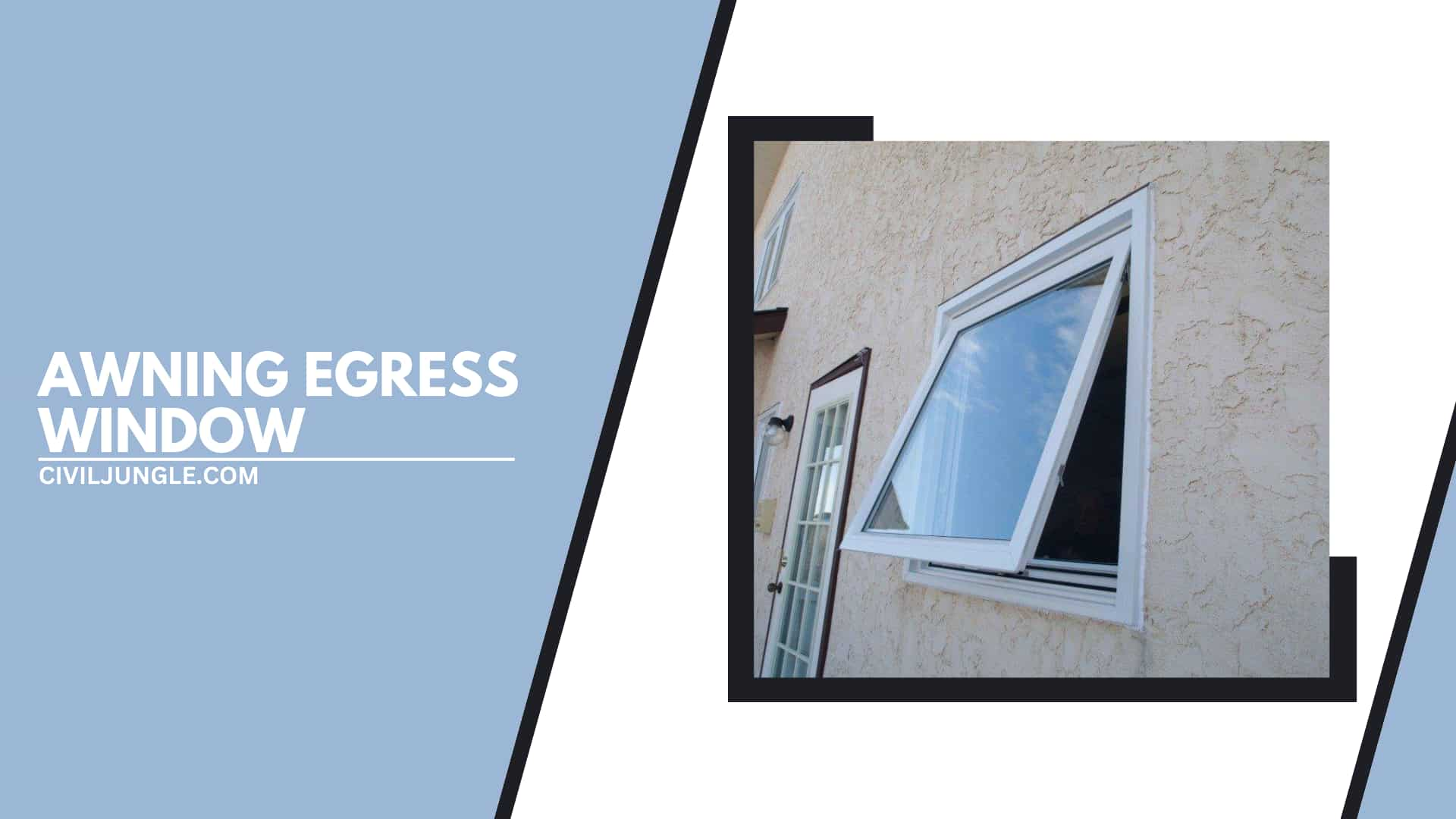
Some people think that “awning windows can be used as an egress window”. So the answer is yes.
It is important that the style is of any window, but it should meet some minimum requirements.
Almost everyone knows what an egress window is. However, in a nutshell, it is a window that helps in rescue in case of an emergency like a fire.
Basic Requirement of Egress Window:
| Width | Height | Minimum Opening | Maximum height above the floor |
|
20 Inches
|
24 Inches
|
7.7 square feet
(5.0 square feet if ground floor)
|
44 Inches
|
These guidelines are essential for each of the residential formats.
Use of Awning Windows
Here, is The List of Benefits of Awning Window as follows.
1. Bathroom
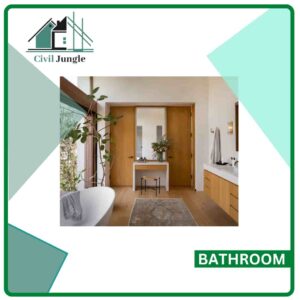
Privacy is paramount in the bathroom.
In addition to meeting this basic need for a bathroom, you can place an awning window on the bathroom wall for ventilation and natural light.
Another good thing about this window is that it can be kept open in any season so that you can take full advantage of it throughout the year.
2. Bedroom

Keeping the window open in the bedroom is a safety concern.
This question is especially important when keeping windows open at night.
Awning windows can be a good option in this regard so that you can get a good night’s sleep with the enjoyment of natural air without worrying about safety.
Useful Article for You
- What Is a Contour Interval
- What Is Tile
- What Is the Difference Between a Shower Pan and a Shower Base?
- What Is Raft
- What Is a Window Panel
- What Is a Frame Structure
- What Is the Measurement for a Queen Size Bed
- What Is Considered Livable Space
- What Is One Way You Can Save Electricity?
- What Is Mdf Mean
- What Is a Bundle of Shingles
- What Is a Gallon of Water Weigh
- What Is Overhang
- What Is Sand Blasting
- What Is a Span Bridge
- What Is a Soil Stack
- What Is the Little Black Diamond on a Tape Measure
- What Is a Louvered Door
- What Is a Spread Footing
- What Is Leveling
3. Kitchen
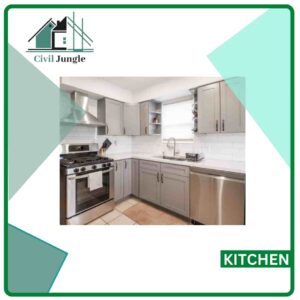
An awning window is a solution to the confusion of placing windows over furniture or fixtures.
This type of condition often occurs in the kitchen.
Awning windows can be a good option when the window should also be in the open position with access to the sink or wide counter.
Another good thing about this window is that the air can circulate throughout the year.
Considering these two things, the awning window in the kitchen is superior to other windows.
4. Other Places

Family safety is the most basic need, so this window is a good choice for places where safety is a priority.
This window is a good choice for spaces like a basement or lower-grade room.
The awning window is opened and closed by a crank, which makes it easier to operate; So it can be used more easily than the slider window.
5. Above Picture Window

The awning window can give a clear view of the outside.
You can place it over the picture window so that the outside view is maintained and at the same time the air circulation in the room is maintained.
Also, read: Properties of Stones | Requirements of Good Building Stones
Installing Awning Windows
If there is a window or any other object it should be fitted properly as it will not require repairs for many years to come.
So here is a brief overview of how to install an awning window.
Tools for Installation of Awning Window
Details of the tools required to install this window are given below.
- Drill with a 3 Mm Bit
- Screwdriver
- Spirit Level
- Tape
- Big Hammer and Small Hammer
- Packers
- Mini Pinch Bar
- Staple Gun and Staples
Casement Window Installation Instructions
Installing Awning Windows
Follow the Steps Below:
- Measure the height, width, and depth of the window frame.
- Keep the size of the opening 20mm wide and 30mm higher than the window.
- Make sure the product depth matches the cladding type.
- Pull the flashing forward with the staple gun and fix it on the face of the stud.
- After checking everything, place the spirit level on the bottom plate.
- Fix them in position with brad nails if packers are needed.
- Mark on the reveal of both jambs at a distance of 100mm above and below.
- Make a 3mm hole with a drill on each mark.
- Place the frame in the opening.
- Installation requires 10mm plaster so overhang the reveal back into the house by 10mm using a 10mm packer or brickies ruler.
- Fix the nail into the studs through the pre-drill hole near the sill on either side of the frame.
- Fix the nail into the studs through the pre-drill holes at the top of the reveal.
- Check that your frame is both square and plumb by holding your spirit level against the jamb.
- Measure diagonally in both directions to check if the frame is square then both measurements will be equal. Use the pitch bar to move the frame if needed.
- Check the inside and outside of the sash to see if the two corners of the sash come in contact with the sill at the same time.
- Move the top or bottom corner of the window inwards and outwards to align the sash across the bottom if both sides collide.
- Once all the conditions are right, pack between the nail and the studs.
For higher frames, additional fixing may have to be added along the reveals on the jamb.
Also, read: Tests on Stones | Crushing Strength Test, Water Absorption Test, Abrasion Test, Impact Test, Acid Test
Advantages of Awning Windows
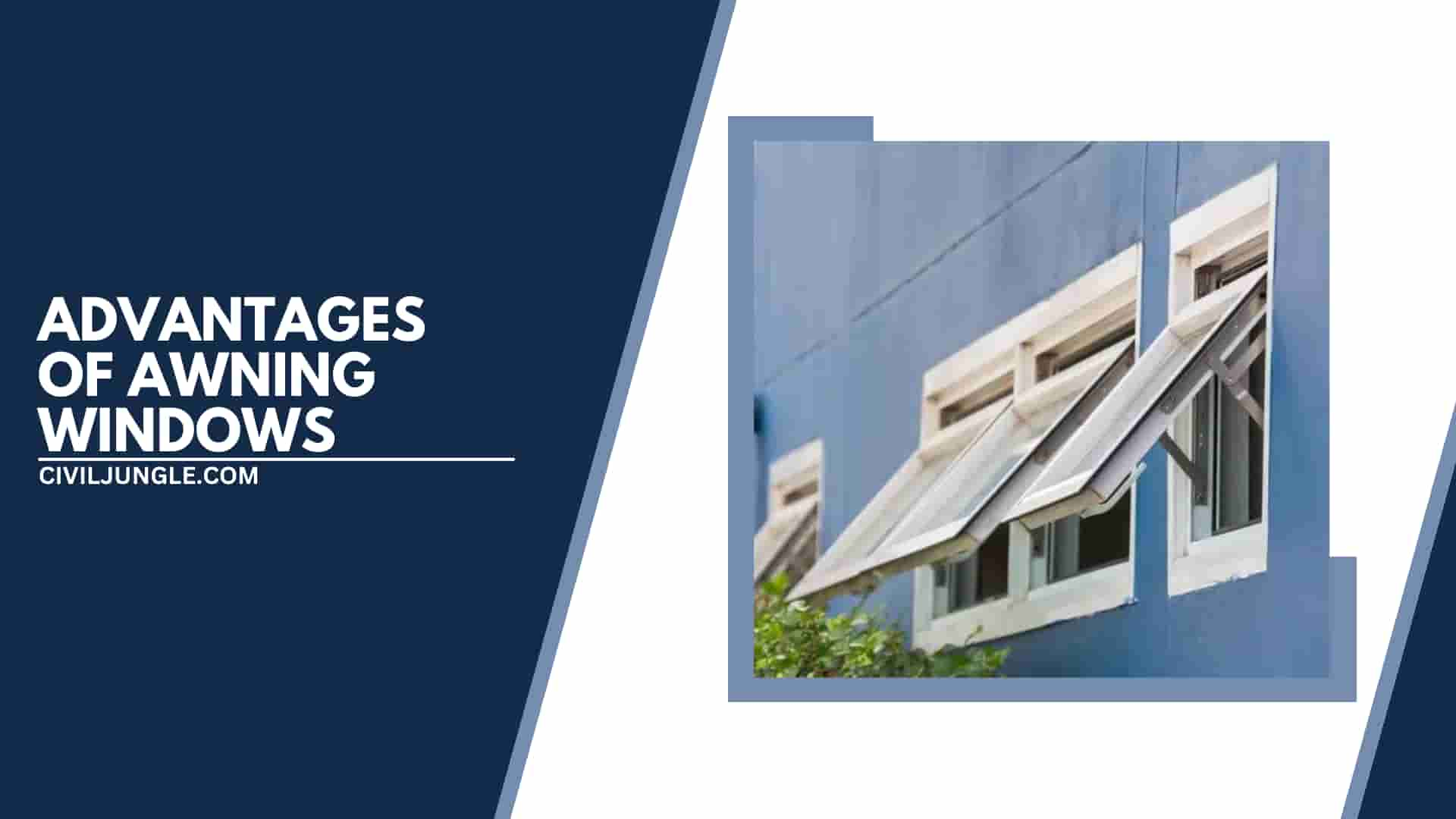
Here, is the List of Pros of Awning Windows as follows.
1. Good Ventilation and Light
Awning windows provide excellent ventilation as well as natural light.
Awning windows on small or difficult spaces of the house offer benefits like natural air and sunlight.
2. Useful in All Kinds of Weather
When the canopy window is open, the glass creates a position so that it can be kept open even in the rain. Also, a good option to keep this window open in other seasons.
This way the awning window is useful throughout the year.
Useful Article for You
- Moment Frame
- Monolithic Slab
- Zero Force Members
- How Much Does a Yard of Concrete Weigh
- Cmu Wall Meaning
- Gradient Road
- Pile-Cap
- Budget Sunroom Ideas
- What Is Gypsum Board
- Types of Vaulted Ceilings
- Well Points
- How Does Baking Soda Remove Blood from Carpet
- What Are Forms in Construction
- How Heavy Is Dirt
- Tender Meaning in Architecture
- Dark Olive Green House
- Cast in Place Concrete
- Lean to Roof
- What Is a Pitched Roof
- How Tall Is an Average Door
3. Privacy
Other types of windows may not fit on the wall height of the house whereas awning windows may fit on any height of the wall.
Due to this feature of the window, the privacy requirement is met by installing it in the bathroom or other place where privacy is required.
4. Security
Awning windows are high on the wall and also small in size so it is difficult for a person to enter.
Thus this window provides ventilation as well as security.
5. Unobstructed View
Awning windows have a single scarf and no rails. So it gives an unobstructed view from the outside.
Also, Read: What Is Shotcrete?
Disadvantages of Awning Windows
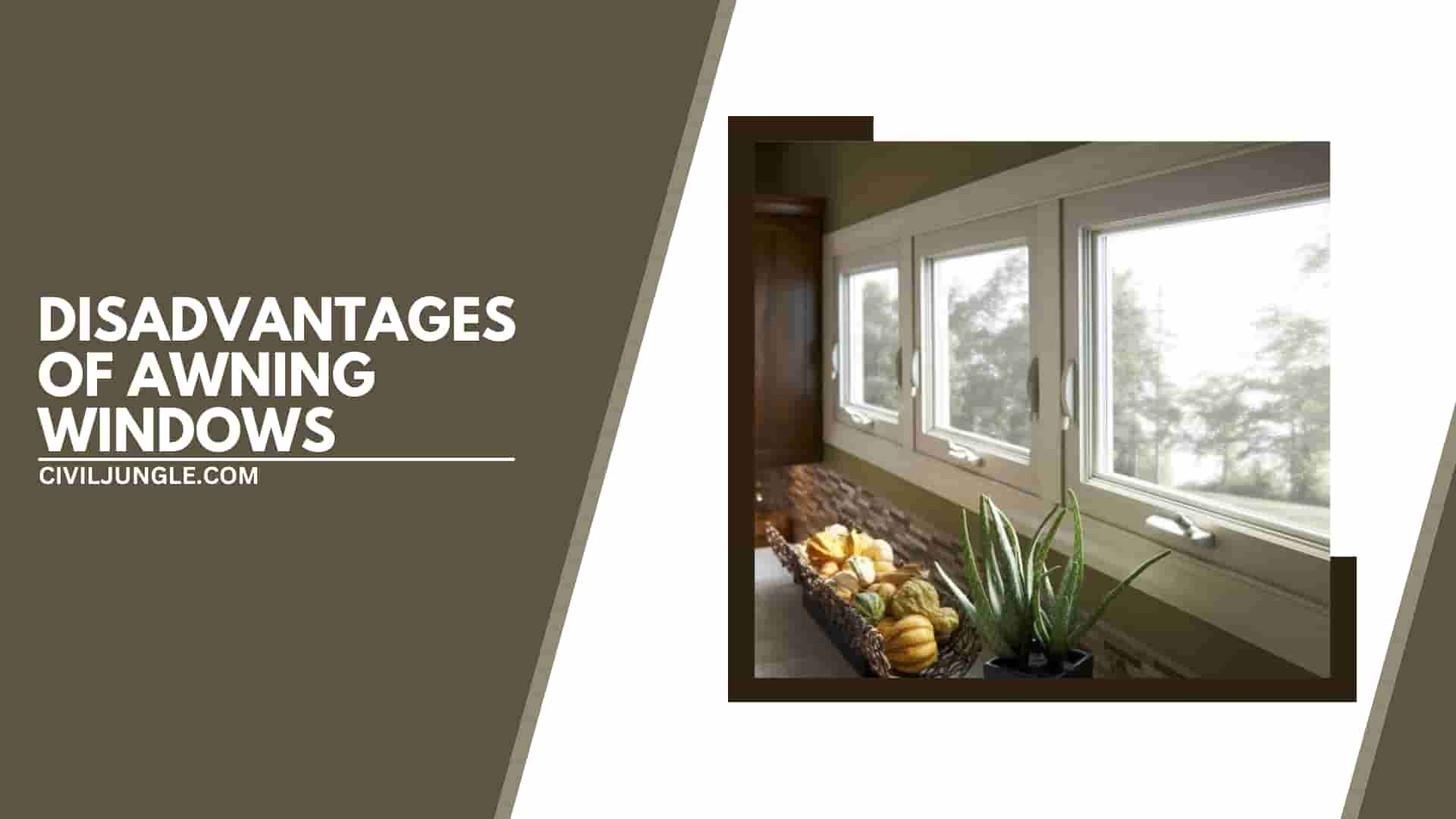
Here, is the List of Cons of Awning Windows as follows.
1. High-traffic Areas
The awning window opening outwards may not be the right choice for high-traffic areas. This window is a hindrance on a busy sidewalk so it is a bad choice in such a place.
This window should not be installed even if there is a tree or other obstruction outside when opening this window.
2. Cleaning
These windows require more cleaning as they are more exposed to rain than other types of windows. If the window does not open at a 90-degree angle and is on the wall or the upper surface of the house, it can be difficult to clean.
3. Repairs
The window opening and closing procedures are relatively complex, which results in more wear and tear. As a result, the window often needs repairs.
4. Escape Route
The most important thing is to have a rescue option at home at times like emergencies. An escape option is especially important on floors other than the ground floor. Given the size of the awning window and the way it opens, it may not be considered an escape route. Therefore, this window should not be selected for this purpose.
Which Is the Best Brand for Awning Windows?
List of best brands for Awning Window:
- Marvin awning window
- Pella awning windows
- Milgard awning Windows
Awning Windows Pros and Cons
Pros:
- Good Ventilation and Light
- Useful in All Kinds of Weather
- Privacy
- Security
- Unobstructed View
Cons:
- High-traffic Areas
- Cleaning
- Repairs
- Escape Route
What Sizes Do Awning Windows Come In?
Standard Size of Awning Window:
- Width – 2 Inches to 3 Feet 10 1/8 Inches
- Height – 1 Foot 8 Inches to 7 Feet 8 7/8 Inches
Awning Window Materials
- Aluminum Awning Window
- Vinyl Awning Window
- Cedar Awning Window
- Steel Awning Window
- Fiberglass Awning Window
What Is an Awning Window?
An awning window is a type of window where the top part is attached to the frame by a hinge and it opens outward from the bottom, providing ventilation and protection from rain.
How Are Awning Windows Operated?
Awning windows can be opened manually with a handle or operated with a hand crank.
Why Is It Called an “Awning” Window?
It’s named “awning” window because when the window is opened, the rectangular glass rises and forms a canopy-like shelter.
What Are the Ideal Locations for Installing Awning Windows?
Awning windows are versatile and can be used in various places. They are commonly used in bathrooms, bedrooms, kitchens, above picture windows, and in spaces where safety is a priority.
What Are the Benefits of Using Awning Windows in a Bathroom?
Awning windows provide privacy while still allowing for ventilation and natural light. They can be kept open throughout the year.
How Are Awning Windows Installed?
To install an awning window, you’ll need tools like a drill, screwdriver, spirit level, tape, hammer, packers, pinch bar, and staple gun. The installation process involves measuring, flashing, fixing, and checking for squareness and plumb.
What Are the Advantages of Awning Windows?
Awning windows offer good ventilation and natural light, can be used in various weather conditions, provide privacy, offer security due to their height, and provide an unobstructed view from the outside.
What Are the Disadvantages of Awning Windows?
They may not be suitable for high-traffic areas, require more cleaning due to exposure to rain, can be more complex for opening and closing, and may not be considered as an escape route in emergencies.
Can Awning Windows Be Used as Egress Windows?
Yes, awning windows can be used as egress windows, but they must meet certain minimum requirements regarding width, height, minimum opening, and maximum height above the floor.
What Are the Standard Sizes for Awning Windows?
Awning windows typically range from 2 inches to 3 feet 10 1/8 inches in width and 1 foot 8 inches to 7 feet 8 7/8 inches in height. Awning egress windows have specific size requirements for safety purposes.
Like this post? Share it with your friends!
Suggested Read-

